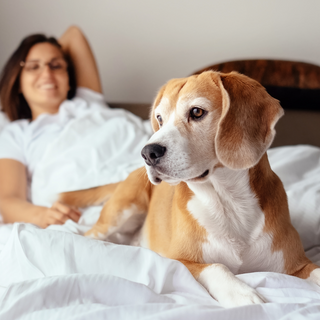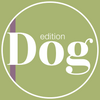Dispelling the raw feeding myths
words: Caroline Hearn
There is a lot of controversy and scare mongering surrounding feeding dogs a raw, species appropriate diet, so here we will explore the common concerns that people have and hopefully put minds at rest.
Worms
Raw meat does have the potential to harbour parasites but with a few precautions the danger is absolutely minimal.
The main precautions we take are:
- We do not feed the intestines of animals, which is where the majority of intestinal worms are.
- We deep freeze fresh meat before feeding.
- We only buy human grade meat from a trusted source.
Wild game in particular, such as pheasant, partridge, pigeon, venison and rabbit should be frozen for three weeks before feeding to ensure any parasites are killed. Your suppliers’ freezers will of course get down to lower temperatures than our domestic ones and the meat will have been deep frozen before you buy it. If in doubt, then ask them to clarify their procedure.
There is a particularity nasty organism that can occur in raw salmon called Neorickettsai helmonthoeca, so if you want to feed raw salmon always make sure it has been deep frozen for a minimum of three weeks. If you are concerned, then either lightly cook the fish or just choose another type of oily fish such as mackerel or pilchards.
Salmonella & food poisoning
Salmonella is a bacterium that naturally occurs in the normal gut flora of not only ourselves but our dogs as well, and is not dependant on diet.
There are very strict rules for testing raw dog food and also on the quality of meat products used, which must comply with government regulations. Separate samples of the meat are taken for salmonella and other bacteria from every species of meat, offal and tripe. Each sample is made up of twelve sub samples, taken randomly within that particular product. The sample is then split into two, one goes off to an accredited laboratory for testing and the second sample is kept at the processing plant. The sample will be failed if any salmonella colonies are present and the Animal and Plant Health Agency informed.
Always buy your raw food from a reputable supplier that is willing to discuss the procedures they use for bacteria testing and packaging the end product.
Basic hygiene rules should apply to the handling of any raw meat products and this also applies to kibble as there have been many recalls over the years where salmonella has been an issue. Dogs are incredibly robust and can eat the most disgusting things on our daily walk with little or no after effects. We on the other hand would become extremely ill if exposed to some of the items that our dogs come into contact with. So, a good level of hygiene and some precautions such as correct storage of raw meat, keeping work surfaces clean and handwashing after handling meat, food bowls or touching the dog’s mouth after they have eaten are all excellent precautionary measures.

Whether feeding dried, tinned or raw food your dog’s bowl can harbour bacteria, not only from the food and also salvia. By using stainless or china bowls you can thoroughly scrub them with hot, soapy water to keep them fresh and clean.
Salmonella can be passed in the dogs’ faeces in both raw and kibble feed dogs so the common-sense practise of picking up dog poop straight away in an appropriate bag, sealing it and disposing responsibly will prevent any danger there. Anti-bacterial wipes or sanitising hand gel are also a good idea to have with you when out walking as there are no hand washing facilities.
Dogs will choke on bones
To safely feed whole raw bones it is vital to only give size appropriate bones and to take into account the way your dog behaves whilst eating them. You can then choose a raw bone to suit the individual dog and of course if feeding whole bones is not an option you can simply feed the complete minces that contain approximately 10 – 12% ground bone. For more information on bones read our feature here.
Aggression
There are a few myths that are very farfetched including “feeding dogs raw food will make them aggressive”
A dog that has had raw mince for breakfast will not suddenly get a blood lust for a deer or rabbit they see on a walk. If dogs are not trained to leave the wildlife alone, he will chase them regardless of the contents of their diet.
If there has been a problem with resource guarding in the past with either food, toys or chews then there is a strong possibility of the same reaction when introducing whole bones, as in a dog’s mind, they are such high value items.

Unbalanced
A common argument over not feeding a raw diet is that it is not balanced, and dogs will be lacking in certain nutrients. To put this into some sort of perspective:
Unless we are on an incredibly strict diet for a health condition, we do not measure out every single meal for ourselves or our children to make sure we get the correct ratio of protein, omega 3s, vitamins and minerals and weight it out on the scales before serving up. Instead we aim to provide all the essentials with a broad selection of foods over the week and with seasonal variation throughout the coming months.
As with our own diets, the goal is to create balance over time, using a broad range of different foods, limited amounts of processed food and ingredients that nourish and support good health.
This does of course involve some research, asking for advice from experienced raw feeders and learning a new way of feeding your dog. It is not just a matter of throwing a chicken carcass down for your dog and hoping for the best.
With the huge rise in popularity of raw feeding there are some excellent companies that do all the work for you and provide complete meals with a vast choice of different proteins, offal and bone.
Expensive
Raw feeding can be expensive depending on what you decide to feed, your dog’s requirements or the producer you buy from.
Having space for storing frozen meat or purchasing a second freezer is certainly a bonus as you can buy in bulk and make use of any special offers at supermarkets, butchers or pet stores. Some suppliers will give discounts for bulk buys, so get together with other raw feeders locally and split the order between you.
When starting out is advisable to buy the complete meals until you get to grips with feeding your dog in a different way and learn about balancing meals. If you want to make further savings then you can feed some or all meals as DIY where you buy individual meat, bone and offal and make the meals yourself often with an 80-10-10 ratio or 70-10-10-10 if you include vegetables.
Once the dog has established their ideal weight, many dogs will require less food, as you are feeding fresh ingredients that their bodies can fully utilise.
- Choosing a selection results in a full page refresh.


